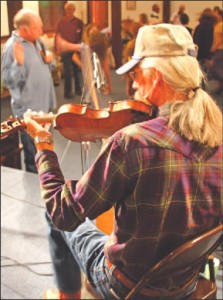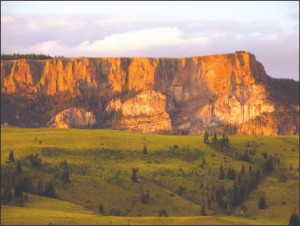It looks like the tourists have returned to Salida. Or at least they were out and about in good numbers on a Friday night during their spring break vacations down south.
Good news for the restaurant owners, lodgers, gas dealers and other visitor-dependent businesses. Even the daffodils and crocus are rearing their tentative heads.
We residents of Central Colorado have braved another winter and it wasn’t so bad. In fact, the latter part of the winter hasn’t brought much in the way of precipitation at all – yet. Naturally that has some folks concerned. Fire fighters for one. Grass and forest fires can be a serious danger in spring with a lethal combination of wind, dryness and lightning.
Of course, the river-dependant operations always keep one cautious eye on the snowpack, knowing a warming trend can bring a rapid runoff and shorten the whitewater rafting season, resulting in less revenue and fewer jobs.
Another group of local citizens are concerned about a different aspect of the lack of precipitation, the aquifer. The aquifer in a high-desert setting. What has triggered this particular group of Central Colorado residents is not the weather patterns, but a large, multinational corporation which has suddenly become higher profile then it probably would have preferred.
The Nestlé Corporation has been negotiating with Chaffee County for over a year to tap into a natural spring near Ruby Mountain, next to the Arkansas River, about five miles south of Johnson Village. They hope to run a pipeline to a transfer station in Johnson Village where the water will be trucked to Denver, packaged and shipped worldwide.
Only in the final months leading up to the counties imminent decision has any sort of organized opposition to the project revealed itself.
Alarmed by the thought of a large corporation permanently removing a natural resource from the county and armed with tales of Nestlés’ misdeeds in other communities across the U.S., community members started loudly weighing in; in the letters page of the local newspaper, at public meetings and in the coffee houses and restaurants. Nestlés, for it’s part, has put forth a full court press of a public campaign of education, statistics, charts, graphs and vague promises of augmentation and rewards beyond the approximately $70-80,000 in annual property taxes the County stands to collect from the venture. By their own calculations, Nestlés could see nearly a billion dollars profit in twenty years of operation.
That is if the aquifer holds out and, if the bottled water industry can counter the negative trends away from disposable plastic containers currently having a negative impact on the industry.
The area’s most vocal supporters of the project are the usual suspects – those who stand to profit from the venture. County officials, meanwhile, are put in an unenviable position of having to make decisions that might be very unpopular with their constituents, or face a deluge of possible lawsuits from a large corporation with a bottomless supply of lawyers.
Opponents see it as nothing short as a water grab, denying the county future use of water that originates within it’s boundaries. They fear once Nestlés has their foot in the door what is to stop them from buying up other water rights and shipping more “liquid gold” out of the county. There are also concerns about the estimated 25 tanker-trucks a day going back and forth over Trout Creek Pass year-round.
Many object strictly on the grounds of the feasibility and waste inherent in the bottled water industry. That is not a fight they can hope to win on the local level.
We decided to reprint an editorial related to this issue, found on the following page, to provide an outsider’s view, and try to get a little background on how these corporations work. Also, Carl Hiaasen is an author whose works I enjoy very much.
On page 20, Colorado Central water columnist John Orr provides an update on the negotiations between the County and Nestlés as well as discussions with opponents.
A decision will probably have been reached by the end of April and we will let our readers know the status of the project in May issue.
Stay tuned!
Mike Rosso – Editor



